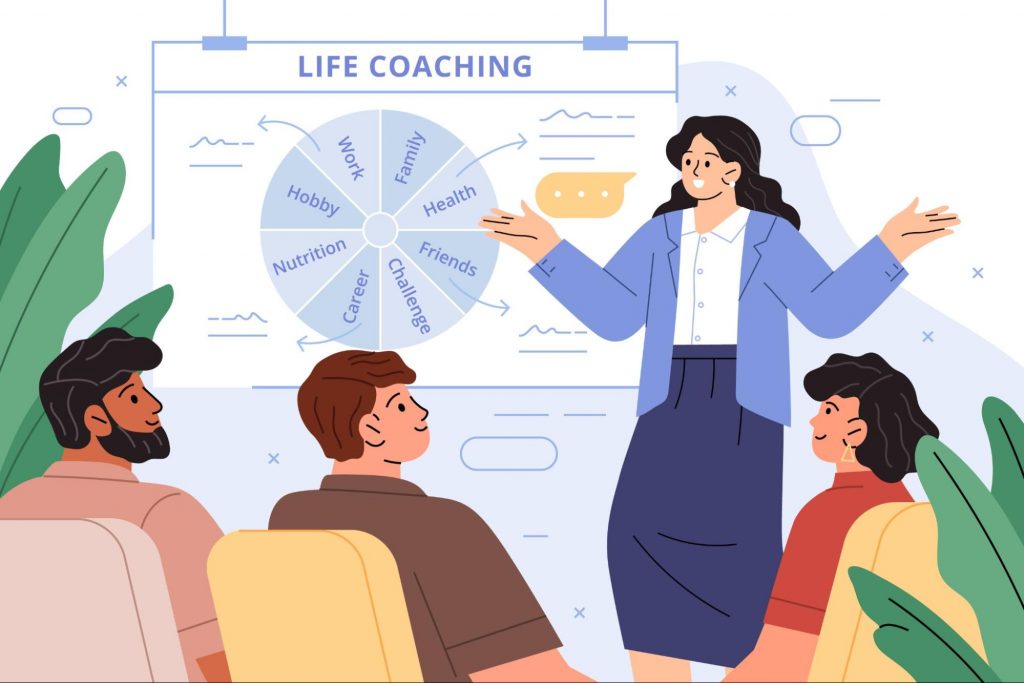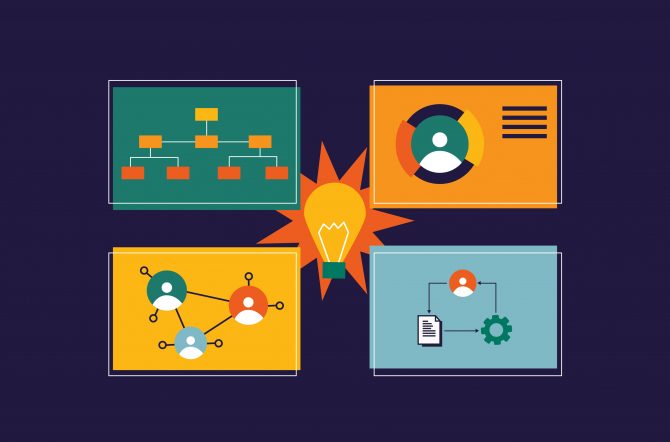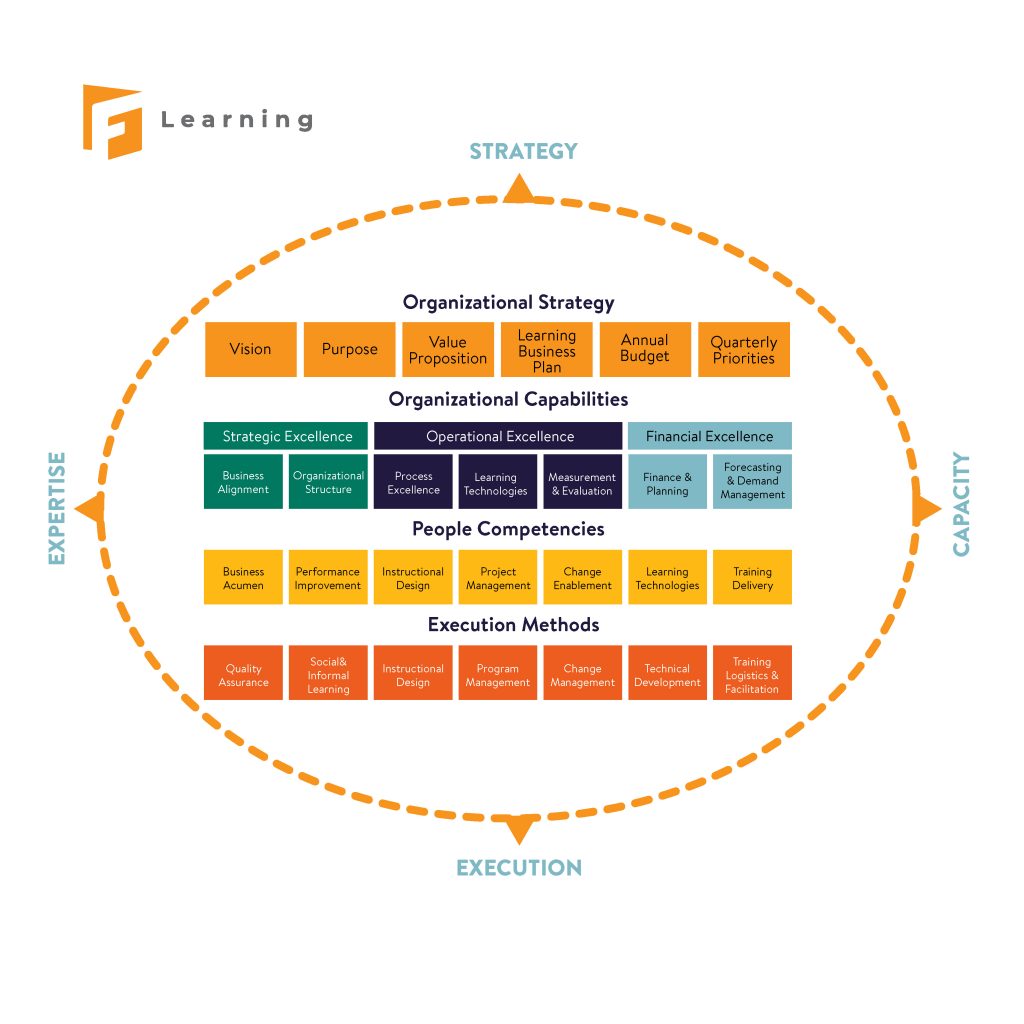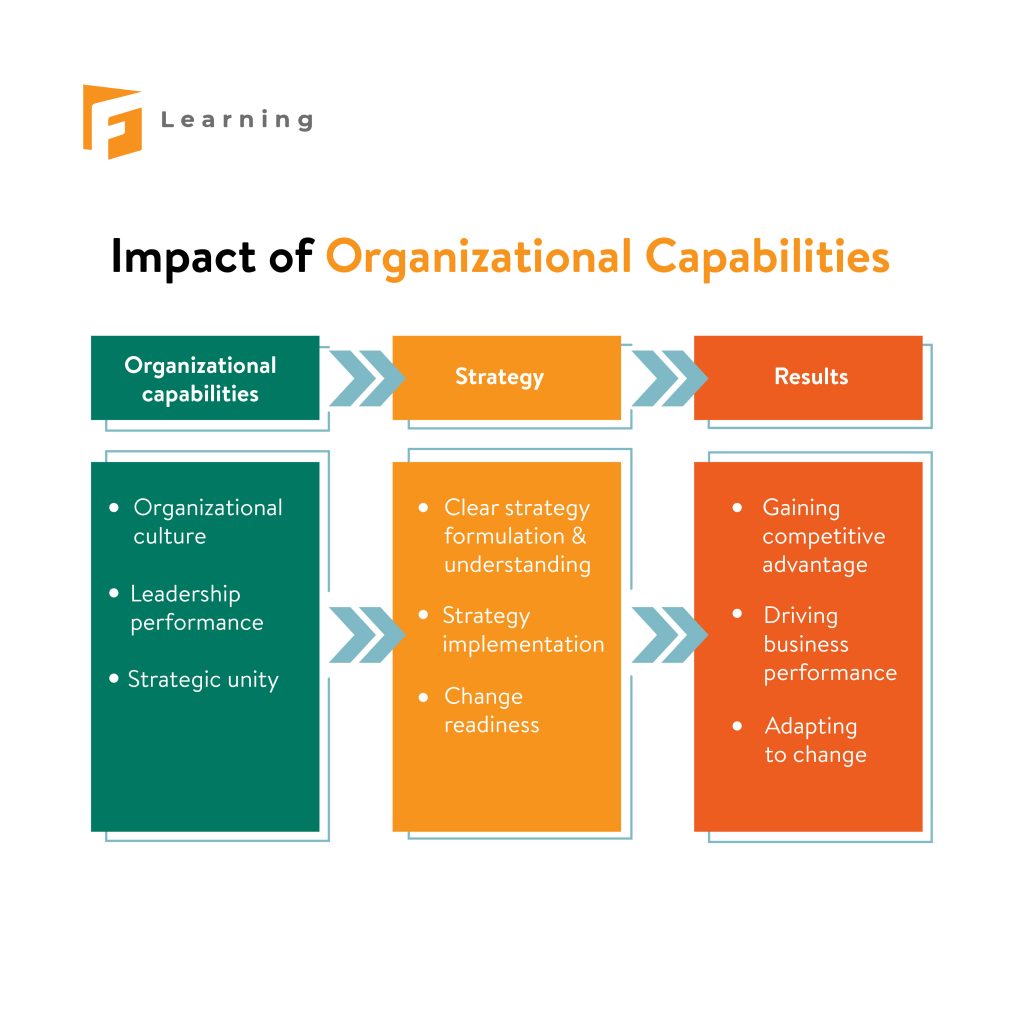According to a Deloitte study, only 10–15% of firms have a well-developed L&D organization structure that aligns with their strategy and objectives. Thus, the rest are likely to either lack the L&D training programs or misalign their existing ones with inconsistent business outcomes. In fact, the reason behind the leader’s strategy to advance the existing L&D organization structure is to have a significant influence on the economic value they produce for their firms.
If your company is about to restructure its L&D organization, below are some of the suggestions for HR and L&D teams to optimize the L&D organization structure.
Components of a Learning and Development Team Structure
Let’s establish the components of an L&D organization structure before we look at how to optimize it.
In order to create the vital link between business strategy and outcomes, four major layers within an L&D organization must be aligned and optimized:
- Organizational strategies: The alignment of the L&D department with the company strategy and goals is referred to as organizational strategy. With a vision, mission, value proposition, learning business plan, yearly budget, and quarterly priorities, the L&D organizational strategy serves the distinct demands of stakeholder groups.
- Organizational capabilities (OC): Organizational capabilities are intangible assets crucial for executing business plans and satisfying customers, leading to measurable commercial success. According to AIHR, these capabilities encompass strategic, operational, and financial excellence, essential for ensuring organizational strategies run smoothly.
- People competencies: If capability refers to the “general” requirements for the employees to carry out tasks as planned, competency leads people to maximize their performance to the state when they become “specialists” within their fields. Individuals with broad and specific abilities, such as business acumen, performance enhancement, instructional design, project management, change management, and learning technology, are all skills that may be learned, and training facilitation is also required for L&D teams.
- Execution techniques: with regard to all previous goals, execution methods should be consistent throughout time to achieve planned outcomes. In an organization, execution methods refer to how work is completed. Quality assurance, social and informal learning, instructional design, program management, change management, technological development, training delivery, and logistics are all examples of execution techniques.
Preparation Checklist to Power your Digital Transformation
Wondering if you miss anything in your preparation to digitize your training? This is just what you need.
To help your training program be more effective, here are the best 4 instructional design templates.
3 common L&D Department structures to consider
The structure of your L&D function will be primarily determined by the structure of the rest of the company. To better align the L&D organization structure to the whole business strategy, it is recommended for L&D to build a cohesive relationship across other business units. Thus, there are 3 basic organizational structures to keep in mind before digging deep into the execution process.
1. Centralized Structure
Under this structure, there will be a single learning leader, such as a chief learning officer who is the brain of the company with the background knowledge of all departments. He/ She is responsible for creating effective central coordination of learning activities and programs that should be meaningful and relevant for everyone in the company to learn.
Pros
The methodology makes it easier to guarantee that all training materials are aligned with the company’s strategic objectives, rather than the sometimes competing demands of different departments. Smaller firms without the resources for a diverse learning organization, as well as bigger organizations with standardized job skills across broad worker populations, benefit from a centralized structure. This structure also works exceptionally well for implementing eLearning localization services, ensuring that training materials are culturally and linguistically adapted while staying consistent across the organization.
To explore the top companies offering eLearning localization, check out: Top 10 Companies Providing eLearning Localization Services
Cons
The disadvantage of a centralized organization is that if other parts of the company believe L&D is unsuccessful, the learning function can quickly become isolated, with departments disconnecting and implementing ad hoc learning programs on their own.
If they don’t communicate well with the head of a specific unit, don’t comprehend learning and development difficulties, or try to circumvent the centralized function and generate training on their own; basically, the training programs are built for nothing.

Recommend reading:
2. Decentralized Structure
In contrast to centralized structure, this type embraces individual learning organizations that better suit business divisions, with no central coordination.
Pros
The main benefit of this architecture is flexibility and variety. What works for one department might not work for another. Therefore, a decentralized organization can respond and change more quickly.
Budgets are closely linked to a certain company area’s ability and desire to invest in learning, which may be advantageous or disadvantageous depending on the scenario. Decentralized learning organizations have closer links with SMEs, making knowledge acquisition more straightforward.

Cons
Since workers can’t readily shift across business units, cross-departmental cooperation is inefficient. Corporate-level procedures and systems become much more difficult to execute due to nonstandard training techniques and uneven approaches to job skills. Moreover, if each department develops a communications course, development funds are being squandered.
3. Federated Structure
Pros
The federated structure blends the centralized and decentralized models by combining decentralized business unit assistance that leverages shared services and central leadership using shared services. Consequently, L&D planning and decision-making are led by a central function in this approach with strong business support.
Standard procedures, tools, and governance are combined with a comprehensive understanding of the company. This paradigm is effective and efficient, especially when implemented inside a well-defined governance framework. Ideally, a federated structure is a balanced model, which will take the best of those mentioned models when properly designed.

Cons
Despite seeming to be the most effective and efficient structure to lean on, this structure still has potential pitfalls, mostly from some companies that lack experienced leaders to handle both centralization and decentralization.
If you’re looking for solutions to bring your training ideas to life, check out top training video production companies.
Considerations to make when building an optimal L&D organizational structure
Consideration #1: Priorities of the organization
When it comes to choosing the most successful L&D model, the context of the organization is key. You may be required to prioritize soft skills and leadership development based on the output of your firm and long-term corporate goals. Practical skills and role-specific training may be more important in other sectors.
For instance, when focusing on leadership development, a centralized L&D department or a hybrid approach that is tightly connected with business strategy is typically required. However, when it comes to service-related industries, service skills eLearning becomes a crucial part of the equation. This ensures employees are equipped with the necessary skills to interact effectively with customers, improving service quality across the organization.
Individual business divisions must be closely aligned with role-specific training and technical skills. As a result, many businesses opt for a hybrid approach in which the L&D structure is tailored to the company’s specific needs.

Consideration #2: Efficiency in terms of resources
Budgets for learning and development have risen in recent years. Despite these improvements, L&D teams are sometimes confronted with a lack of resources in relation to the organization’s need for training. While centralized methods are frequently more cost-effective, they make it much more difficult to adjust rapidly to new demands.
On the other hand, it is more expensive to establish decentralized or federated arrangements, but they allow for greater alignment with business units.
Balancing your L&D budget with the need to scale training may assist you in determining the optimum way to optimize the learning function while deciding on the optimum L&D organizational architecture.

Consideration #3: Look beyond the walls of the formal buildings
There will be many relationships and informal networks between L&D, stakeholders, subject matter experts, and business partners throughout the firm, whether you have a centralized or decentralized structure. These informal links should be considered, and the effectiveness of these informal partnerships might possibly inform a more formal network.
New procedures and reporting structures may face opposition if existing connections aren’t considered. For instance, if training programs are introduced without factoring in existing communication methods, the effectiveness of these new structures could be hindered.
eLearning voice over services, for example, may be underutilized if the transition isn’t properly aligned with the needs of the employees who are familiar with existing workflows. When a new structure is adopted, employees may choose to simply avoid it, especially in bigger firms where procedures are more complex to manage.

Consideration #4: Participate in the reorganization process with your L&D team.
There must be an urge for change, and resistance is reduced when all stakeholders are included in the process. Not only is it that change management recommended practice to include in your team early in the process, but it may also generate business insights that can help you make smarter restructuring decisions.
Members of your team who work directly with your business partners are familiar with their difficulties, personalities, and the company as a whole.

Throughout the process, use your team to verify that everyone is on board with the new structure. Teams are frequently stressed during reorganizations due to changes in duties, titles, and locations. Keeping your staff engaged increases the likelihood of a successful organizational structure and execution.
To sum up
The merging of learning and work has posed new problems for the L&D function, moving it away from HR and into the heart of the business. Organizations are experimenting with how to integrate learning effectively into the flow of work, and these four top methods are proving to be successful. L&D and HR experts who bring out the best optimal L&D organization structure will help their companies be better prepared for future success and survive in a fast-changing world.
Read more:






